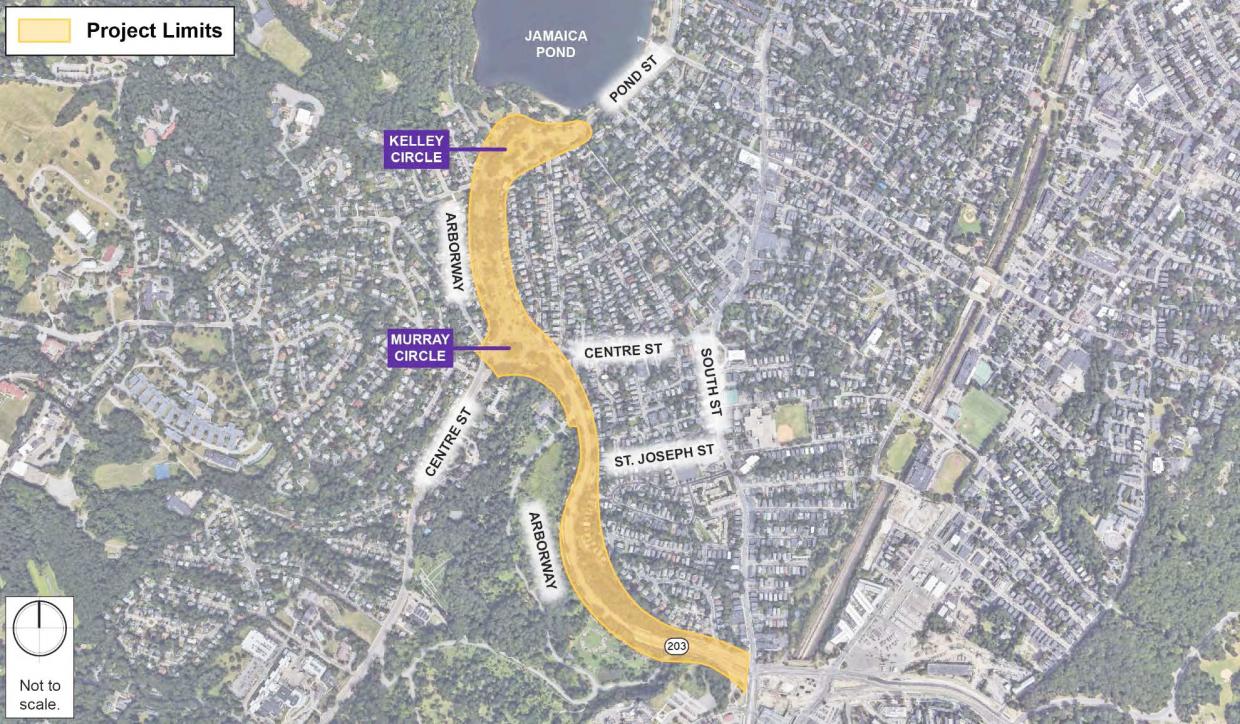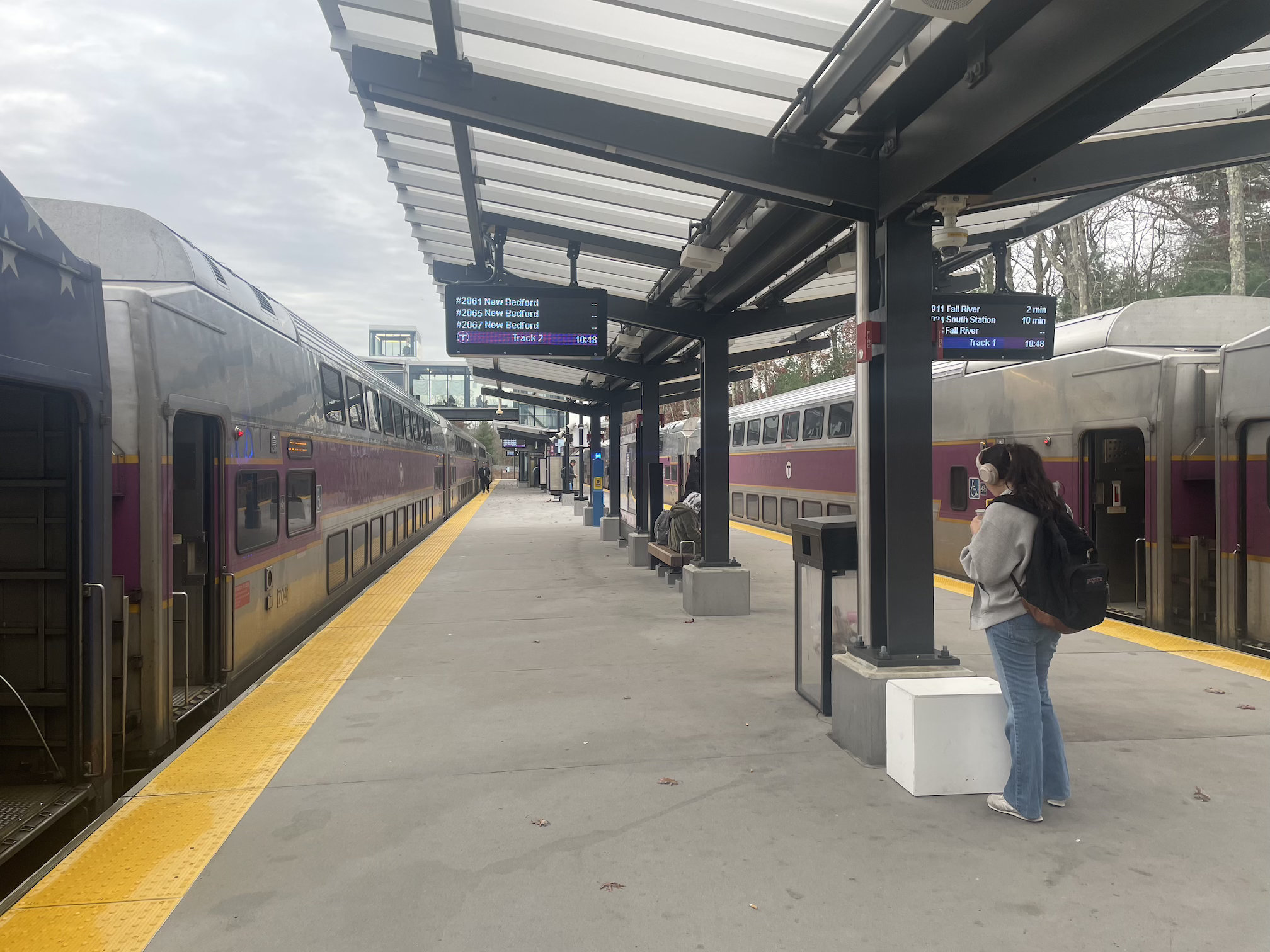The state Department of Conservation (DCR) is kicking off a comprehensive redesign project to improve safety and create a new, separated bike and pedestrian route along the Arborway in Jamaica Plain.
At a public meeting at the Brigham and Women's Faulkner Hospital Thursday evening, DCR officials explained that they are about to hire a team of consultants to help them develop conceptual designs and final, shovel-ready construction plans for a complete reconstruction of the Arborway roadways between Forest Hills and Jamaica Pond.
An audience of nearly 100 neighbors filled an auditorium to hear the DCR's plan. Several audience members asked DCR to build a 2015 concept drafted by Toole Design Group that would have shrunk the roadway's two traffic circles and made room for new dedicated footpaths and bikeways.
The current effort will consider that plan as well as other concepts to develop an actual plan for construction, said Jeffrey Parenti, DCR's Deputy Chief Engineer. Parenti estimated that the design process could last 12 to 18 months, and construction could begin shortly afterwards, pending the approval of funding through the DCR's annual capital budget.
Parenti also said that the project team would examine the possibility of removing travel lanes in key locations. South of Jamaica Pond, the Arborway widens to an eight-lane cross-section where traffic is split between the central roadway and two side "carriage roads," which merge back into the main roadway at large traffic circles.
Parenti suggested that, pending the results of a traffic analysis, those "carriage roads" may function better as single-lane streets with on-road protected bike lanes.
Sarah Freeman, who lives next to that eight-lane section of the Arborway, supported that idea, and compared the current design to an aneurysm.
"If you're sitting in traffic, having that extra lane doesn’t really help you because you just have to get back in line," said Freeman. "We’re doing an exercise in 'hurry up and wait.'”
A handful of audience members expressed skepticism about losing lanes for cars, but others pointed out that the Arborway, like all Boston roadways, is likely to be congested no matter what its design is, and that safety and the restoration of green space should therefore be a higher priority.
“I work here (at Faulkner Hospital). I walk or bike through Murray Circle every day," said Tara Rousseau, a clinical social worker. "I can’t tell you how many times I’ve almost been hit. It’s terrifying, even when I wear bright clothing and I wave and yell, people in cars don't stop. I’d love to come up with some creative ideas to make those circles safer for everyone.”
A road safety audit conducted earlier this year will also inform the upcoming design process. Meanwhile, the DCR plans to implement several of that audit's short-term recommendations this fall and next spring: repairing sidewalks, making ramps at crosswalks accessible to wheelchairs, and re-striping the roadways in an effort to organize and slow down traffic.
Event details:
Arborway Parkways Improvement Project
Thursday, November 21, 2019 - 6:30 p.m. – 8:00 p.m.
Brigham and Women’s Faulkner Hospital - Huvos Auditorium, 3rd Floor
By transit: Take MBTA bus 38 from Forest Hills, or walk across the Arboretum from the Forest Hills Orange Line stop
Meeting Notice






